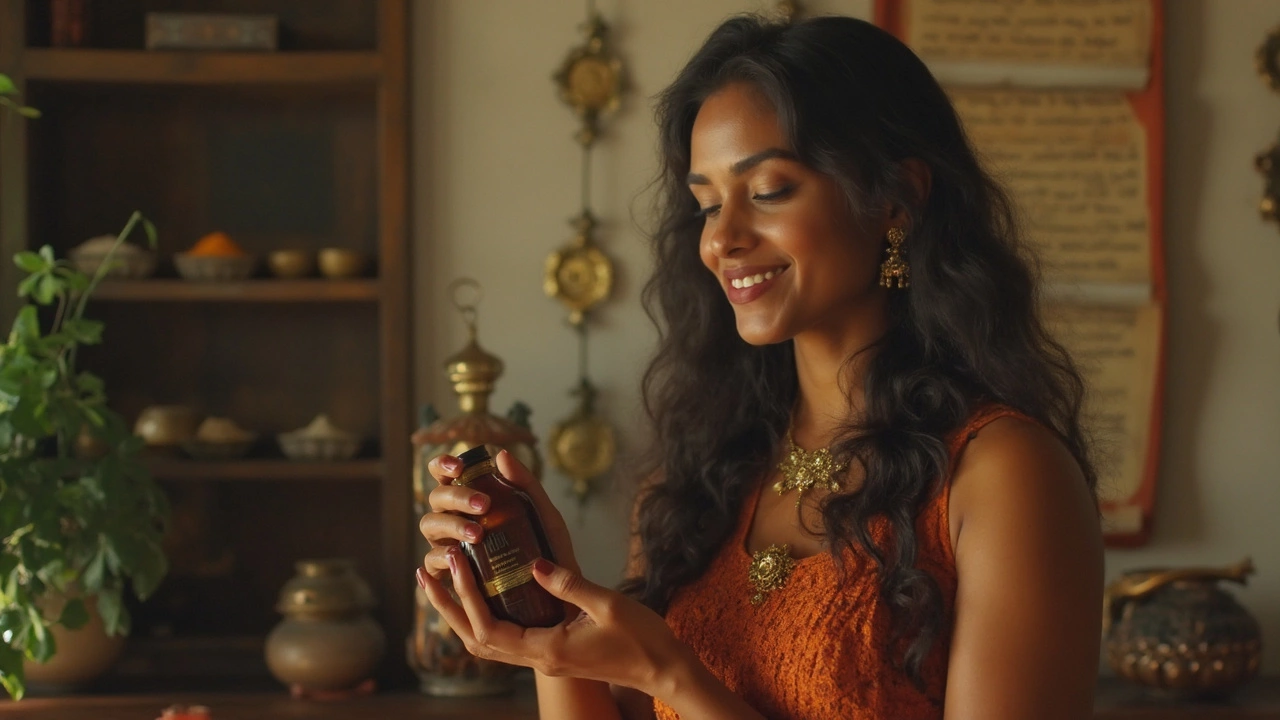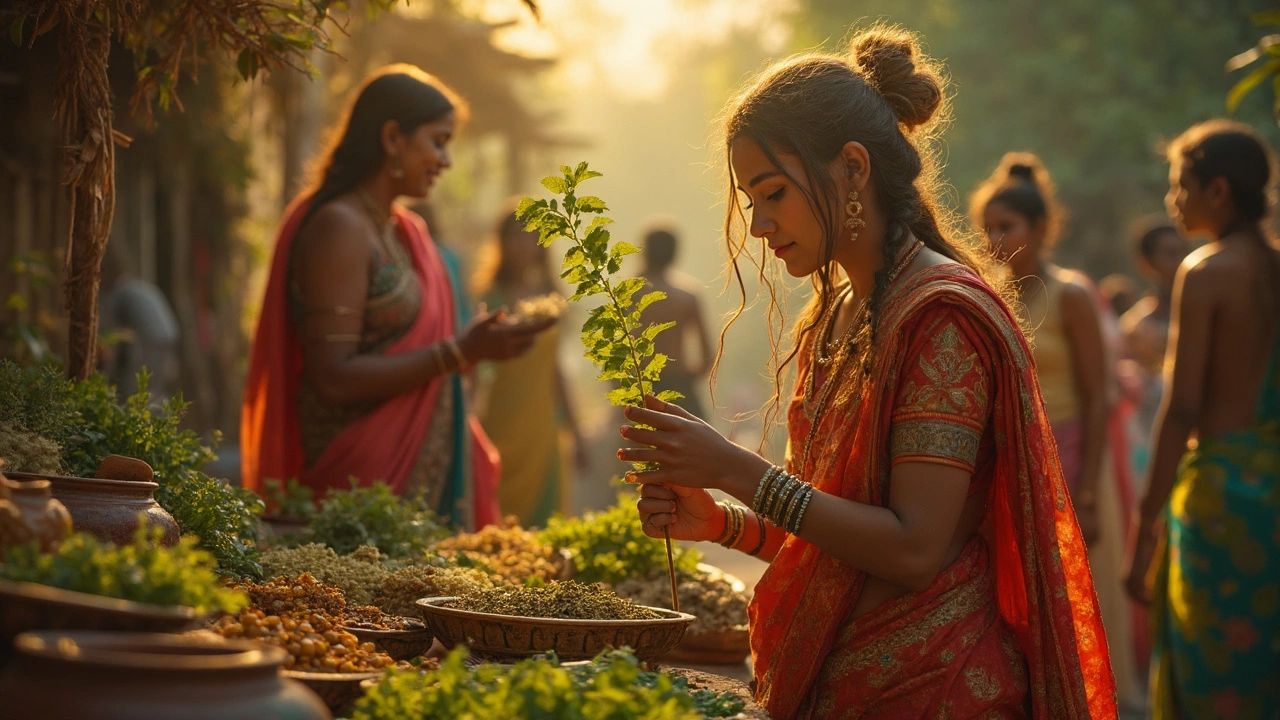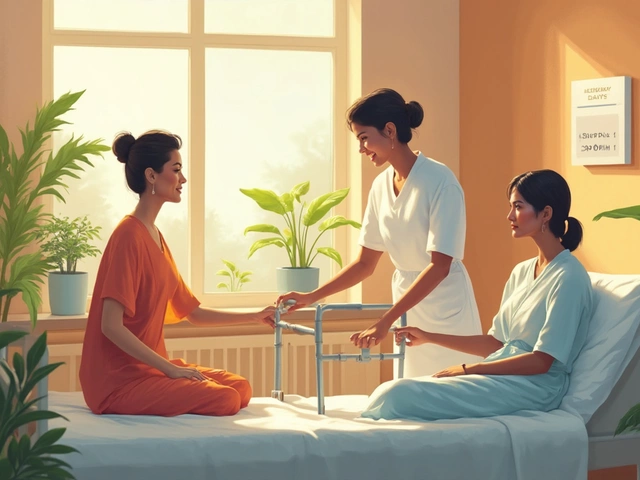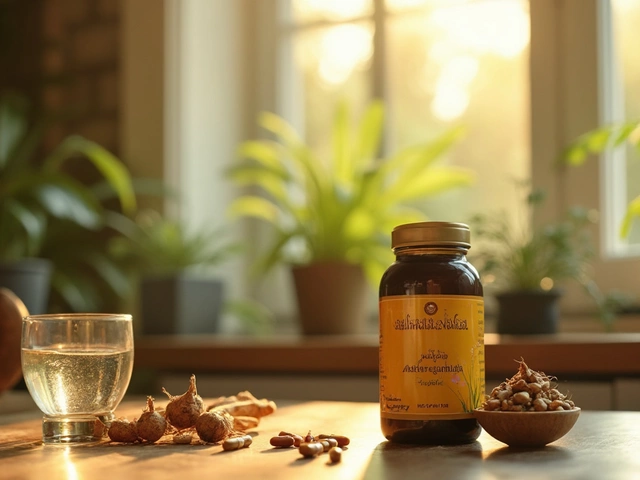People chase a lot of fancy products for better hair. But for centuries, Ayurveda has gone straight to plant power—especially one herb they literally call the 'king' for hair.
Bhringraj (sometimes called false daisy) isn't hype—this weed actually backs up its crown. Used in hair oil, powders, and masks, Bhringraj is packed with nutrients that support roots, calm itchy scalps, and even slow early greying. There's a reason you’ll find it in tons of traditional Indian hair oils.
Before you start rubbing just any green paste on your scalp, it helps to know what actually makes Bhringraj special, how to use it right, and what real results look like. Get ready for tips you can try this weekend—no mystical rituals, just science and smart habits.
- Why 'King' of Hair Matters in Ayurveda
- Meet Bhringraj: Hair's Best Friend
- How Bhringraj Actually Works for Hair
- Best Ways to Use Bhringraj at Home
- What to Expect (and What Not to Believe)
- Other Herbs Worth Knowing
Why 'King' of Hair Matters in Ayurveda
If you ask anyone deep into Ayurvedic medicine, they’ll tell you hair isn’t just about looks. Ayurveda says good hair shows whether your body and mind are in balance. Bad hair? It’s usually a warning light for stress, poor nutrition, or deeper health issues.
Ayurveda even divides hair problems by 'doshas'—those body types you see in every guide. They believe each dosha (Vata, Pitta, Kapha) reacts differently:
- Vata types get dry, frizzy, or brittle hair.
- Pitta folks deal with thinning or early greying.
- Kapha types often face oily scalps and heavy dandruff.
This is why ayurveda swears by going to the root cause and choosing herbs that match your dosha. Among all herbs, bhringraj stands out in tradition and modern study as the ‘king’—it tackles so many hair problems that people stopped keeping count. Classic Ayurvedic books like 'Bhavaprakasha' literally crown it as the go-to for hair growth, thickness, and even dealing with scalp heat.
Here’s an interesting thing: a small 2022 study from a university in India used 100 people and found that using bhringraj oil three times a week helped reduce hair fall and scalp irritation for 85% of users within two months. That’s a pretty solid stat for something you can grow in your yard.
No need to memorize old Sanskrit texts—the point is this: Ayurveda believes if you pick the strongest herb for hair, you’re not just improving what’s on your head, you’re aiming for better health all around. That’s why so much fuss over which one’s the king.
Meet Bhringraj: Hair's Best Friend
This isn’t just another trendy plant. Bhringraj has been a go-to in Indian households for ages. You’ll spot it in classic formulas and hear grandmas swear by it for thicker, shinier hair. If you look for its scientific name, it’s Eclipta alba—old school, but seriously powerful for anyone struggling with breakage, hair fall, or even dandruff.
What sets bhringraj apart from the rest? Its leaves contain lots of plant proteins, iron, vitamin E, and some unique chemicals that help blood flow right to your scalp. The result: stronger roots and less hair shedding. Researchers in India found that when tested on animals, bhringraj extracts made new hair sprout 30% faster compared to other common herbs.
Here’s what makes bhringraj easy to recognize if you’re out in the wild or at a market:
- It’s a small plant, less than knee-high, with round white flowers
- The leaves are flat and pretty simple; crush them, and you get dark green juice
- It grows fast by water, in ditches, and on farms all over Asia
But let’s be honest—you’ll probably get it at a shop. These are the bhringraj products worth trying for hair growth and care:
- Bhringraj oil—best for scalp massage, usually mixed with coconut or sesame oil
- Bhringraj powder—mix with water or yogurt for a quick scalp mask
- Herbal shampoos and conditioners—look for it high on the ingredients list, not just sprinkled in for marketing
So, what’s in it for your routine? Real talk: Bhringraj isn’t magic, but pretty much anyone can try it out. It’s natural, usually cheap, and when used right, it supports better hair growth from the root. Plus, it pairs well with other herbal all-stars, which we’ll get into later.
| Form | Typical Use | Expected Benefit |
|---|---|---|
| Oil | Massage, 2-3x per week | Boosts blood flow, soothes scalp |
| Powder | As hair mask | Strengthens roots, reduces dandruff |
| Capsule/tablet | Supplement (ask your doctor first) | May support overall hair nutrition |
How Bhringraj Actually Works for Hair
Bhringraj has a seriously strong street rep in ayurveda for a reason. It’s not just tradition—studies show that Bhringraj contains natural plant compounds like ecliptine and wedelolactone. These work together to boost blood flow at the scalp, which helps get more nutrients right to your hair roots. More blood flow means stronger, healthier growth, which is exactly what thinning and tired-looking hair needs.
Bhringraj is loaded with vitamin E, iron, magnesium, and other minerals. This matters because iron deficiency shows up as hair loss for tons of people, and Bhringraj gives you a little extra support if you keep losing those precious strands.
- Bhringraj oil is used for massaging the scalp, and that process itself helps circulation even more.
- When you put Bhringraj on your scalp, it calms itchiness and dandruff because it’s got a bit of anti-inflammatory and antifungal power.
- This herb can also help slow down hair greying, at least for some people, by feeding melanin-producing cells—so it tackles a bunch of hair issues at once.
In one 2011 lab study, Bhringraj extract boosted the number of hair follicles in the growth (anagen) phase in rats, with results better than standard hair tonics. The effect? Faster hair regrowth. Pretty wild for a small weed.
| Nutrient Found in Bhringraj | Main Benefit for Hair |
|---|---|
| Vitamin E | Promotes scalp health & boosts shine |
| Iron | Reduces hair loss risk |
| Magnesium | Supports hair strength |
| Plant Antioxidants | Protects hair from damage |
Bottom line: Bhringraj doesn’t just sit on your scalp for show. Its active ingredients get to work at the roots, helping you tackle hair fall, weak strands, and even early greying—right where it counts.

Best Ways to Use Bhringraj at Home
Using bhringraj for hair isn’t just something your grandma swears by—Ayurvedic doctors still recommend it because it actually works. The cool part is, you don’t have to search for rare stuff or spend a fortune. Most Indian grocery stores stock bhringraj powder and oil, and you can even find it online. Here’s how to make the most of it at home:
- Bhringraj Oil Massage: Massage pure bhringraj oil into your scalp for 10-15 minutes—a quick head massage boosts blood flow. Leave the oil on for at least an hour, or overnight if you have time. Do this twice a week for best results.
- DIY Bhringraj Hair Mask: Mix 2 tablespoons of bhringraj powder with some warm water, coconut oil, or yogurt until it’s a thick paste. Apply to your scalp and hair, let it sit for 30-45 minutes, then wash out with mild shampoo. This helps with dandruff and scalp dryness, too.
- Herbal Hair Rinse: Steep a tablespoon of bhringraj powder in 2 cups of hot water, let it cool, then use it as a final rinse after shampooing. Some people notice less hair fall after a few weeks using this once or twice a week.
- Boost Your Regular Oil: Not ready to commit to pure bhringraj oil? Add a teaspoon of bhringraj powder to 100 ml of coconut or sesame oil. Heat it slightly, cool it, strain, and use like any regular hair oil.
A 2021 study out of India found that people using bhringraj oil for three months had a 38% improvement in hair thickness compared to plain coconut oil. That’s not magic; that’s science-backed hair growth.
| Method | Main Benefit |
|---|---|
| Oil Massage | Boosts scalp circulation, nourishes roots |
| Hair Mask | Reduces dandruff, conditions hair |
| Herbal Rinse | Fights hair fall, adds shine |
| Powder in Oil | Easy upgrade to daily routine |
Even with all these options, don’t expect overnight miracles. Stick with it for a few months—real ayurveda takes patience. And of course, skip it if you’re allergic or if your scalp gets irritated. You don’t need fancy products to get started. Your kitchen and a few packets from the store are all you need to test if bhringraj is the real deal for your hair.
What to Expect (and What Not to Believe)
Let’s be real: even the bhringraj can’t work magic overnight. You’re not going to wake up with a full head of luscious hair a few days after your first oil massage. Real results are possible, but the changes are usually steady and subtle at first. If you’re looking for actual regrowth, you’ll need patience and consistency—think three months minimum, and that's if your scalp is healthy and you’re not dealing with bigger medical stuff.
This herb’s main wins are reducing hair breakage, helping with a dry or itchy scalp, and sometimes making weak strands look thicker. It’s packed with vitamin E, iron, and magnesium—stuff your roots love. Some users say they see “less hair in the shower” and “fewer white hairs” after regular use, but it’s not a miracle worker if your hair loss comes from hormones, stress, or medical issues.
Here's what you can realistically expect when you use bhringraj:
- Less hair fall due to breakage (your brush looks less scary)
- Softer, shinier hair if you’re regular with oiling or masks
- Mild cooling sensation on scalp, which can help if you’re always scratching
- Very, very minor darkening for some folks—not a replacement for dye
Now, the internet has some wild claims. Forget ideas like 'instant regrowth on bald spots,' 'turning grey hair black overnight,' or 'zero dandruff forever.' No solid studies prove those. The herb can help improve the scalp’s condition, but if something sounds too good to be true, it probably is.
Here’s a quick rundown from a 2021 clinical review looking at ayurveda and natural hair remedies:
| Benefit | What Science Says |
|---|---|
| Reduces hair breakage | Yes, with regular use |
| Boosts scalp health | Yes, reduces mild inflammation and dryness |
| Restores lost hair | Possible with mild, non-medical hair thinning |
| Reverses baldness | No clear proof |
| Turns fully grey hair black | No solid evidence |
Bottom line: bhringraj is no scam, but it's not magic either. Give it a good trial, watch for changes, and skip wild promises. Pair it with a balanced diet and less stress for the best shot.
Other Herbs Worth Knowing
Bhringraj may top the list for ayurvedic hair care, but a few other herbs have solid reputations—and real benefits—for your hair. If you want to mix things up or target different issues, check these out:
- Amla (Indian Gooseberry): A classic for boosting natural shine, supporting strong roots, and fighting dandruff. Amla is packed with vitamin C. Powdered amla mixed with water makes a quick mask, or you’ll find it in oils.
- Brahmi: Known for calming the scalp and helping with dryness, especially if you get those annoying flakes in winter. Brahmi oil doubles as a stress-buster when you massage it in.
- Neem: If your scalp is itchy or you’re dealing with flakes, neem’s the go-to for its antifungal powers. It’s in a ton of natural shampoos, but folks also use neem leaf paste right on the scalp.
- Fenugreek (Methi): Super easy to find in your kitchen. Soak the seeds, grind into a paste, and apply for less breakage and smoother hair. People also swear by methi for slowing down hair fall.
- Hibiscus: Rich in amino acids and vitamin C, it’s famous for boosting hair volume and supporting new growth. Fresh flower paste or pre-made hibiscus oils both work.
If you're curious how these perform, have a look at the quick-and-dirty stats from a recent survey in India about popular herbal hair care choices:
| Herb | % Users Reporting Improvement | Main Benefit |
|---|---|---|
| Bhringraj | 74% | Reduces hair fall |
| Amla | 67% | Adds shine, reduces dandruff |
| Brahmi | 54% | Moisturizes scalp |
| Neem | 61% | Fights scalp itch/flakes |
| Fenugreek | 58% | Reduces breakage |
| Hibiscus | 49% | Promotes hair growth |
If you’re serious about results, try making a simple hair oil or mask with two or three of these herbs. Just remember, consistency is everything. Pick the ones that fit your hair needs—don’t pile on random stuff hoping for magic.

 How Long Are You Bedridden After Open-Heart Surgery?
How Long Are You Bedridden After Open-Heart Surgery?
 How Long to Walk Again Post-Total Knee Replacement
How Long to Walk Again Post-Total Knee Replacement
 Can You Get a Prescription Without Seeing a Doctor?
Can You Get a Prescription Without Seeing a Doctor?
 Using US Health Insurance Abroad: What You Need to Know
Using US Health Insurance Abroad: What You Need to Know
 Is Ashwagandha Safe? What You Really Need to Know Before Taking It
Is Ashwagandha Safe? What You Really Need to Know Before Taking It